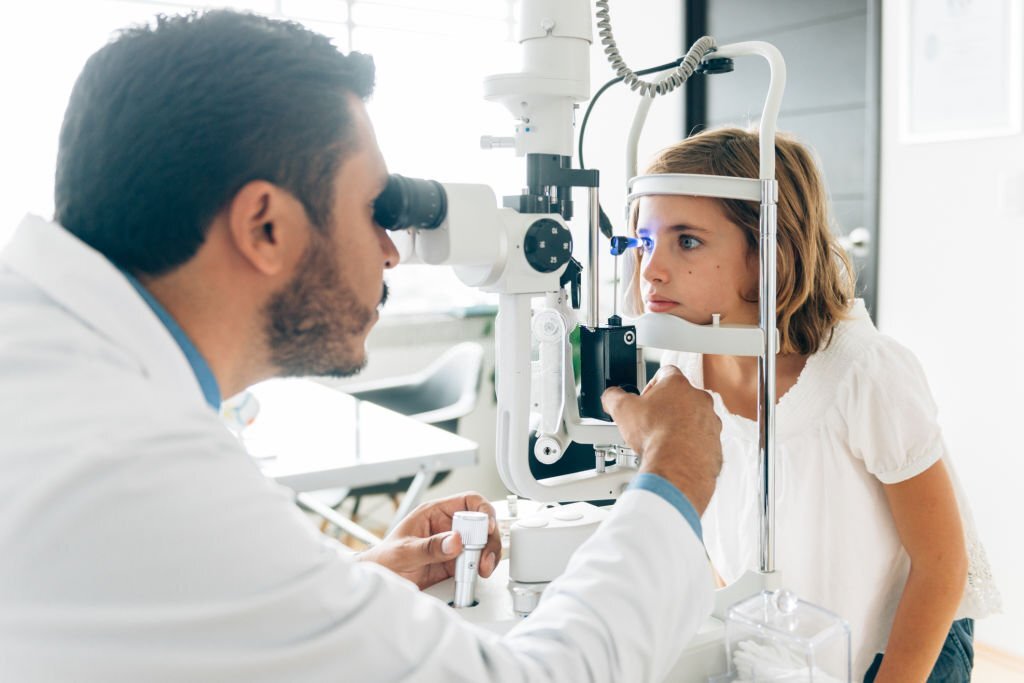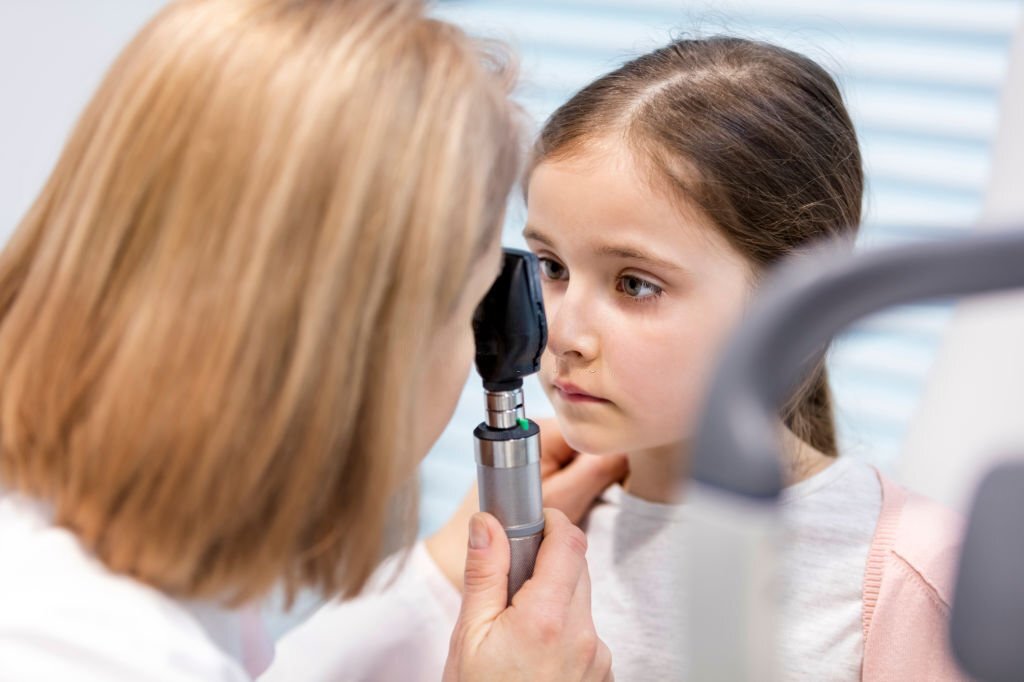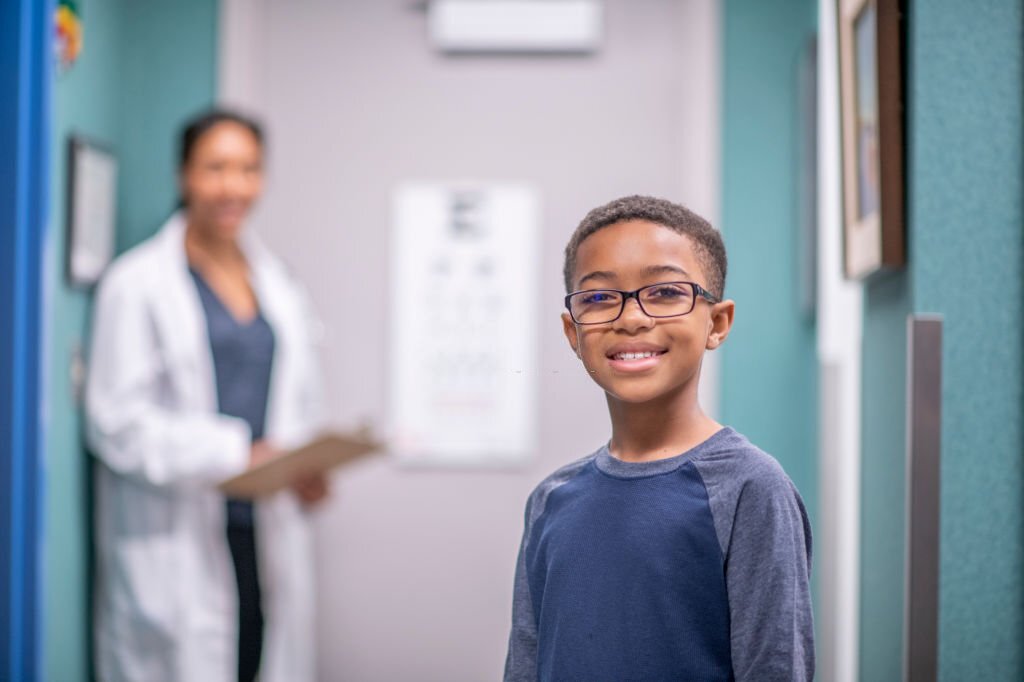Vision therapy is the most effective treatment for amblyopia in both children and adults alike. What makes it work so well? The brain’s neuroplasticity. Simply put, adults have less neuroplasticity than children. Vision therapy takes longer for older patients – but the results will be worth it!
What exactly is amblyopia?
Amblyopia (lazy eye) is a situation in which vision in one or both eyes is impaired due to a breakdown in communication between the brain and the eye(s).
Amblyopia, also known as “lazy eye,” is a neuro-developmental vision disorder that manifests itself in early childhood. People can have it as a result of a severe brain injury or a neurological disorder. Even while using corrective glasses or contacts, people with amblyopia have poor vision in one eye. If left untreated, this illness can have a negative impact on a child’s ability to succeed in school, athletics, and relationships, as well as their self-image and mental wellbeing.
The signals from the amblyopic eye are likely to be just as powerful as those from the other eye, but they have been switched off due to reduced binocular vision.
Through a series of tailored tasks, vision therapy helps amblyopes improve their visual abilities by improving eye coordination, depth perception, and reducing suppression (when the brain inhibits blurred or diplopic images (double vision) by ignoring the image of one of the eyes).
Amblyopia is caused by the brain’s inability to use both eyes together, according to research. As a result, the brain deliberately ignores information coming in via one of the eyes. Aside from poor visual acuity, people with amblyopia have trouble with depth perception, scanning eye movements, and visual decision-making when driving.
Amblyopia comes in a variety of forms
Optical defocus is a term used to describe when something is out of focus. If a person doesn’t wear their prescription if it’s needed for one or both eyes this can happen. Isoametropic amblyopia is caused by a high refractive error that is about equal in both eyes, whereas anisometropic amblyopia is caused by a difference in vision impairment between the two eyes.
Strabismus. Early-onset continuous unilateral strabismus is the most common cause of strabismic amblyopia. The deviation creates a double vision and visual disorientation by presenting the eyes with two separate pictures. Rather than attempting to reconcile these disparate representations, the deviating eye’s vision is intentionally suppressed.
Deprivation amblyopia or form deprivation. A physical barrier on the visual axis causes this sort of amblyopia, which prevents a crisp, clear image from being produced in one or both eyes. From birth to about the age of eight, the blockage must be present. A congenital cataract is the most prevalent cause of form deprivation amblyopia, but other diseases such as lid ptosis (droopy eyelid) and corneal opacities can also cause it.
Amblyopia symptoms
It’s vital to remember that a child with amblyopia may not exhibit any symptoms. It’s crucial to get a functional eye exam to see if your child has or could be at risk of developing amblyopia. Especially if they’re squinting or closing one eye a lot, or if they’re having trouble reading or keeping visual focus. Amblyopia can be treated at any age, but the earlier the condition is identified and treated, the better the prognosis.
Although visual acuity is frequently the focus of treatment, amblyopia affects a variety of other aspects of the visual system. Reduced tracking and focusing ability, accommodative skills, binocular teaming, contrast sensitivity, and stereo acuity are all common symptoms of amblyopia. Increased spatial distorting, crowding effects, as well as suppression under binocular visual situations, are frequently associated with these impairments. Amblyopia can impair a child’s ability to perform in the classroom and raise the likelihood of a vision-based learning difficulty.
The importance of early detection in preventing amblyopia’s long-term implications cannot be overstated. From birth until six to eight years of age, the fundamental development of visual pathways takes place. The visual system is particularly sensitive to amblyogenic factors—mechanisms that impede normal visual development—during this period. Optical defocus, strabismus, form deprivation, or a combination of the three are examples of such issues. Amblyopia can occur if any of these factors are present from birth until the age of eight when visual development is vulnerable.
What is vision therapy and how does it work?
Lenses, prisms, colored and opaque filters, occlusion devices, and other special equipment are used in vision therapy. This is referred to as passive vision therapy because it encourages the eyes to compensate. A series of active tasks are also utilized to retrain the brain’s interaction with and interpretation of visual signals. Traditional vision therapy routines have been transformed into novel, interactive, and entertaining activities. These improve accommodation (focusing), fixation, saccades, pursuits (eye-tracking), and spatial skills. This has developed in recent years thanks to advanced digital therapies (including virtual reality equipment) (eye-hand coordination).
It is made up of regular in-office appointments and (typically) a series of assigned daily exercises, all of which are individually recommended and monitored exercises targeted at improving visual skills and processing. Depending on the severity of the condition and patient cooperation, the program might last anywhere from a few weeks to several months.
To build efficient visual skills and processing, vision therapy comprises organized activities that are individually prescribed and supervised. It normally consists of a 45-minute weekly in-office appointment plus 15 minutes of nightly homework for the patient. Most treatments last anywhere from a few weeks to several months, depending on the number and severity of diagnoses, as well as the patient’s compliance and motivation. Compliance is critical for vision therapy to be successful. It is critical to emphasize to the patient the necessity of going to weekly therapy sessions and doing the required homework. Keeping track of schoolwork has never been easier because of new computer-based therapy.
Adults and children with amblyopia can benefit from vision therapy. Because vision therapy relies on the brain’s neuroplasticity, which adults have less of than youngsters, this treatment approach takes longer in the senior population. Adults, on the other hand, are more likely to stick to a therapy routine. Patients of any age can and do improve their vision. Binocular function dramatically improves with good vision therapy.
Vision therapy treatment options for amblyopia
Refractive error correction
Correction of refractive error using spectacles is the first step toward efficient amblyopia treatment. To ensure a clear retinal image in each eye, a precise spectacle prescription is required. To gather this information, cycloplegics are required, especially in preverbal children or those who are unable to adequately engage in the subjective refraction process.
According to studies, spectacle correction alone can resolve uncorrected anisometropic amblyopia in around 27% of children aged three to seven. Glasses alone were able to enhance visual acuity by more than two lines in 75 percent of individuals with strabismic or combination aniso-strabismic amblyopia in the same age range, with 32 percent indicating entire resolution. Spectacles can be worn until visual acuity reaches a plateau. Additional treatment is required if residual amblyopia exists.
Occlusion therapy
Patching the better-seeing eye achieves total occlusion, whereas atropine eye drops, Bangerter foils, or contact lenses provide partial occlusion. The basic idea behind all types of occlusion is the same: occluding the better-seeing eye makes the amblyopic eye work harder, allowing it to create stronger neural connections in the visual area of the brain.
Atropine therapy
Atropine therapy – Only if the sound eye is hyperopic will this work. The atropine drops cause the unaffected eye’s near vision to blur, requiring the youngster to rely on the amblyopic eye for close work. Because it is impossible to remove or look around an eye drop, once instilled, is the ideal choice for kids who are noncompliant with patching therapy. This treatment option is ideal for high-energy individuals who struggle to keep an eye patch on, children with hectic schedules, and senior patients with cosmetic concerns. Binocular vision is also aided by this therapy approach. Atropine has a few drawbacks, including the fact that it is a prescription eye drop that must be supplied and a severe stinging sensation upon installation. Atropine causes a dilated pupil, which causes light sensitivity.
Bangerter foils
These can be applied to the better-seeing eye’s spectacle lens to provide a blurred image at both a distance and up close. By altering the foils when the amblyopic eye’s vision improves, practitioners can lessen the degree of blur. These also aid in the development of binocularity and are ideal for older children who are concerned about their appearance. A Bangerter foils, on the other hand, should be used with caution on persons suspected of noncompliance, as it may be easy to peek over the glasses.
Steps in amblyopia vision therapy
Anti-suppression
Anti-suppression activities should be included in amblyopia treatment since patients with amblyopia have a complete but inhibited binocular system. Anti-suppression exercises aid in the development of stereopsis, improve fusion, broaden vergence ranges, and enhance binocularity in normal viewing settings. The amblyopic eye participates in anti-suppression procedures that make it to become more competitive with the non-amblyopic eye in order to lessen suppression. Information from both eyes can be integrated normally under artificial viewing settings when the amblyopic eye is not suppressed. The longer the patient is binocular in an artificial environment, the better the results will be. Anti-suppression therapy may be introduced early in treatment to allow the amblyopic eye to perform in a binocular state and stimulate more natural binocular connections, according to some practitioners.
Oculomotor skills
The therapy plan can include ocular motor tasks to promote eye-hand coordination, pursuit accuracy, saccades, and fixation to help patients develop normal eye movements and central fixation.
Patients can conduct word searches or concealed picture exercises to improve their spatial processing.
Accommodation therapy for amblyopia
Accommodation-related vision therapy practices should improve focusing accuracy, ability, amplitude, and reaction speed. According to research, activities that promote accommodation using a target distance, such as monocular accommodative rock and binocular accommodative rock, are more successful than exercises that stimulate accommodation using a target distance, such as hart chart near-far rock.
Results of vision therapy
While typical amblyopia treatment focuses on improving monocular function by delivering visual input to the amblyopic eye. Traditional vision therapy activities can help with the underlying binocular dysfunction that comes with the condition. The doctor can lower the overall amount of therapy time required by starting visual therapy. Furthermore, combining a vision therapy program with partial or total occlusion is thought to be more beneficial than occlusion alone.
Increased accommodation, improved oculomotor skill accuracy, increased vergence ranges, improved spatial perception, and reduced suppression and eccentric fixation are some of the goals of vision therapy.
The goal of treatment is for the patient to be able to operate normally with good vision and binocularity. This high level of binocularity aids vision improvement and prevents visual acuity regression once amblyopia treatment has ended.
The goals of vision therapy for amblyopia should not only be focused on visual acuity, but also on binocular system function. Treatment for amblyopia should not be regarded as complete until the amblyopic eye’s visual acuity has corrected under binocular viewing settings. After amblyopia treatment has ended, it is critical to treat all parts of the binocular system in order to achieve excellent binocular vision. Practitioners can be confident that their amblyopia patients will receive the greatest care and obtain the best visual outcomes if they follow this therapy approach.
Low vision for amblyopia
Not all methods effectively treat amblyopia. Some patients are still left with a visual impairment. If the visual impairment is bilateral and they are unable to do the daily activities this wish too a low vision consult may be advised. A low vision device may be just what is needed to help the patient to read, write or maintain their independence. A vision therapist is an optometrist that specializes in vision therapy and a low vision specialist is an optometrist that specializes in low vision aids. If you or a loved one suffers from amblyopia or low vision find the appropriate doctor near you.














